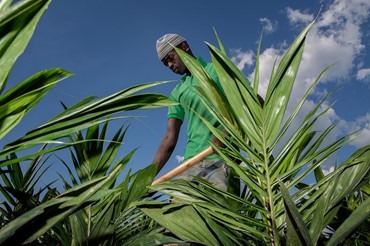With the project’s long-term impact on vulnerable households, Chi would hold meetings in the early morning. And like clockwork, the STVC Team Leader would be the first to arrive at the meeting place.
“I’m an early riser,” the 60-year-old Chi says. “I admit, I have a surplus of energy compared to most people my age. I've always been someone who's perpetually moving, whether I’m at work or at home – you will seldom see me just sitting and not doing anything.”
Ever on the go, she is accustomed to catching the sun rise and working hours after it has set, partly due to her experience with projects of similar scope.
Before leading STVC, Chi was the national program manager for KALAHI-CIDSS, a Department of Social Welfare and Development project. There, she organised her team to provide post-rehabilitation support to over 17,000 barangays – communities that make up the smallest unit of administration in the Philippines – across the country, training close to two million community volunteers and quickly adjusting plans amid Typhoon Yolanda (known internationally as Haiyan), which hit several regions hard back in 2013.
“That was crazy time because we had to help victims recover from the effects of Yolanda. Working in an emergency situation means you need to make yourself available almost 24/7. So, yes, it was stressful,” Chi shares. “But I’d like to believe that experience prepared me to become a better development practitioner and manager. In the peak of operations, we were managing 9000 people and getting grievances almost everyday. Everyone felt they deserved to be helped first after the typhoon. It was a tough test of tenacity under extreme pressure from our stakeholders.”
Similarly, the first phase of STVC was also impacted by an unforeseen event – COVID-19 – forcing everyone to quarantine inside their homes and significantly altering any plans of face-to-face training and meetings. The pandemic naturally made meeting project participants even more difficult for the teams and mentors, whose engagement with affected households is integral to STVC.
“We really saw how she successfully guided everyone in working around the new context, even integrating hybrid modalities for mentoring and other types of strategies to make sure the project runs smoothly,” says STVC Deputy Project Manager Chezka Tabajonda.












